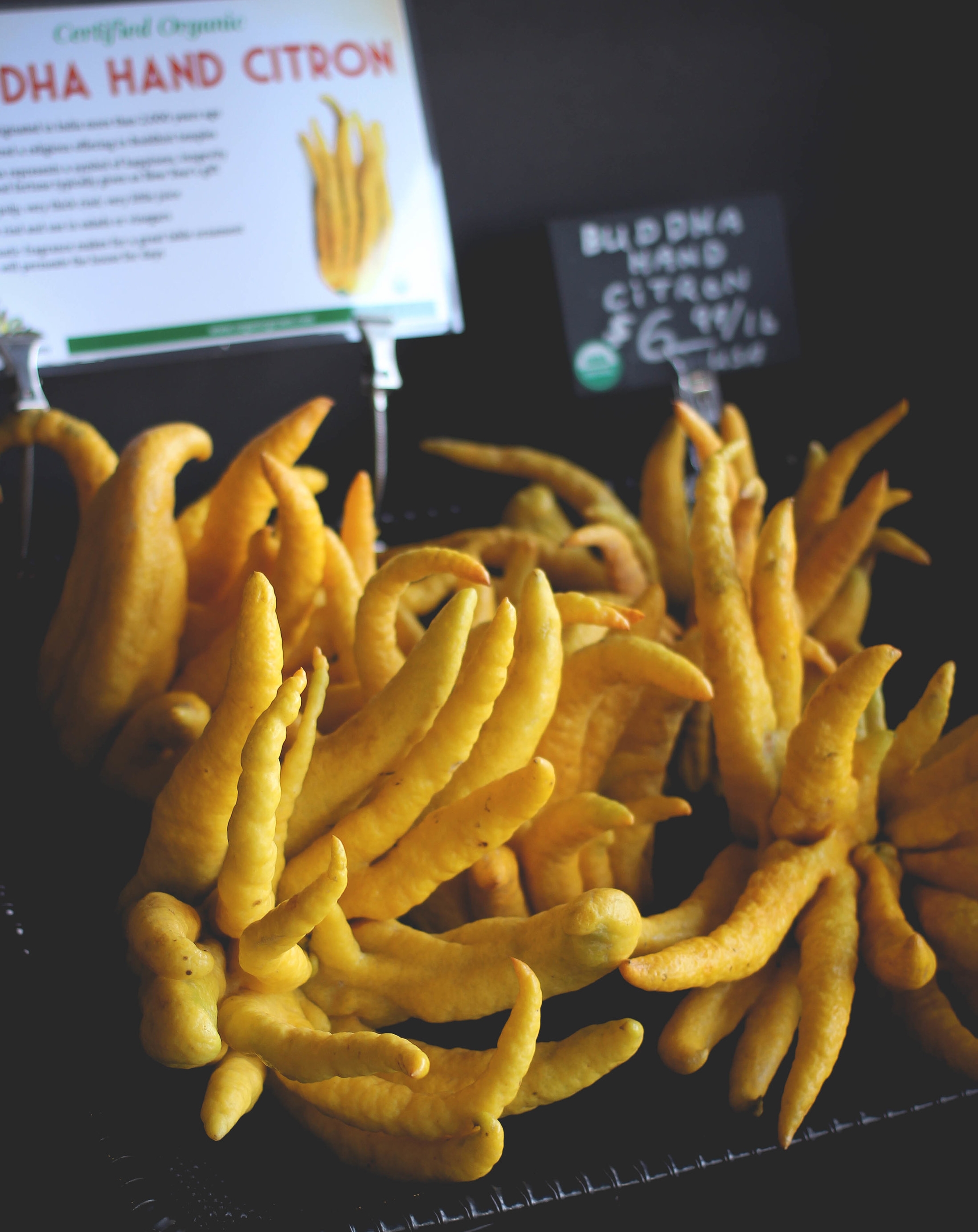Unlike lemons, Buddha's hand's pith is not bitter, and so can be used raw or cooked in baked goods, salads, alcoholic infusions, and preserves!
Buddha’s Hand, likely originating in India more than 2,000 years ago, is considered a religious offering in Buddhist temples. The fruit acts as a symbol for happiness, longevity and good fortune, and is typically given as a New Year's gift.
Buddha's Hand is a citron, an ancestor of lemons and oranges, and is made of only sweet rind: no fruit, no pulp, no seeds, and no juice. It peaks in the winter months, and lucky for the Palouse, is available at the Moscow Food Co-op right now!
Here are a few ways to use this unusual and aromatic fruit:
Eat it raw: The fruit works the same as anything you'd use lemon rind for: Thin slices or zested Buddha's hand are great for use atop salads or in vinaigrette, or to garnish dishes with an additional fragrant flavor.
Candy it: Buddha's hand lacks the bitter rind flavor of oranges and lemons, and is perfect for use in fruitcakes or unique cocktails. The candied citron pieces can be stored in a jar at room temperature for a few weeks, but can be refrigerated for up to six months. One 8 oz. fresh citron will yield about one cup of candied pieces. Follow this recipe by David Lebovitz to learn more!
Refresh your home: The Buddha's fruit is extremely fragrant. Slice pieces off to impart a lemony, fresh scent in different rooms. A few swipes with a Microplane or cheese grater will release a potent perfume.
Make a liqueur: Buddhacello? Buddha's Hand is an ultra-aromatic alternative to the traditional Italian lemon infusion. We found this recipe from Theresa Blackburn that includes a recipe for Buddha's hand liqueur and an aromatic simple syrup recipe for use in subsequent cocktails!



